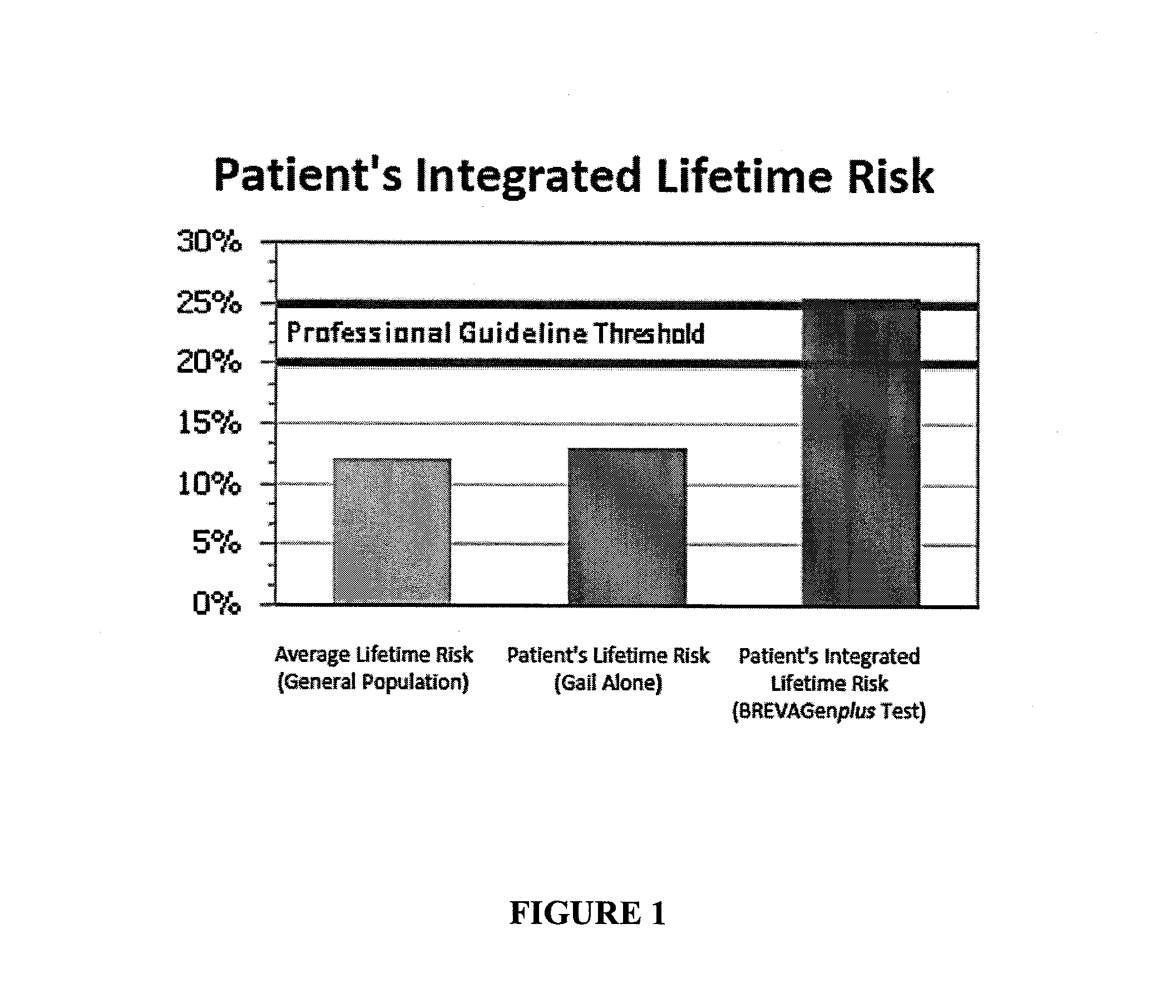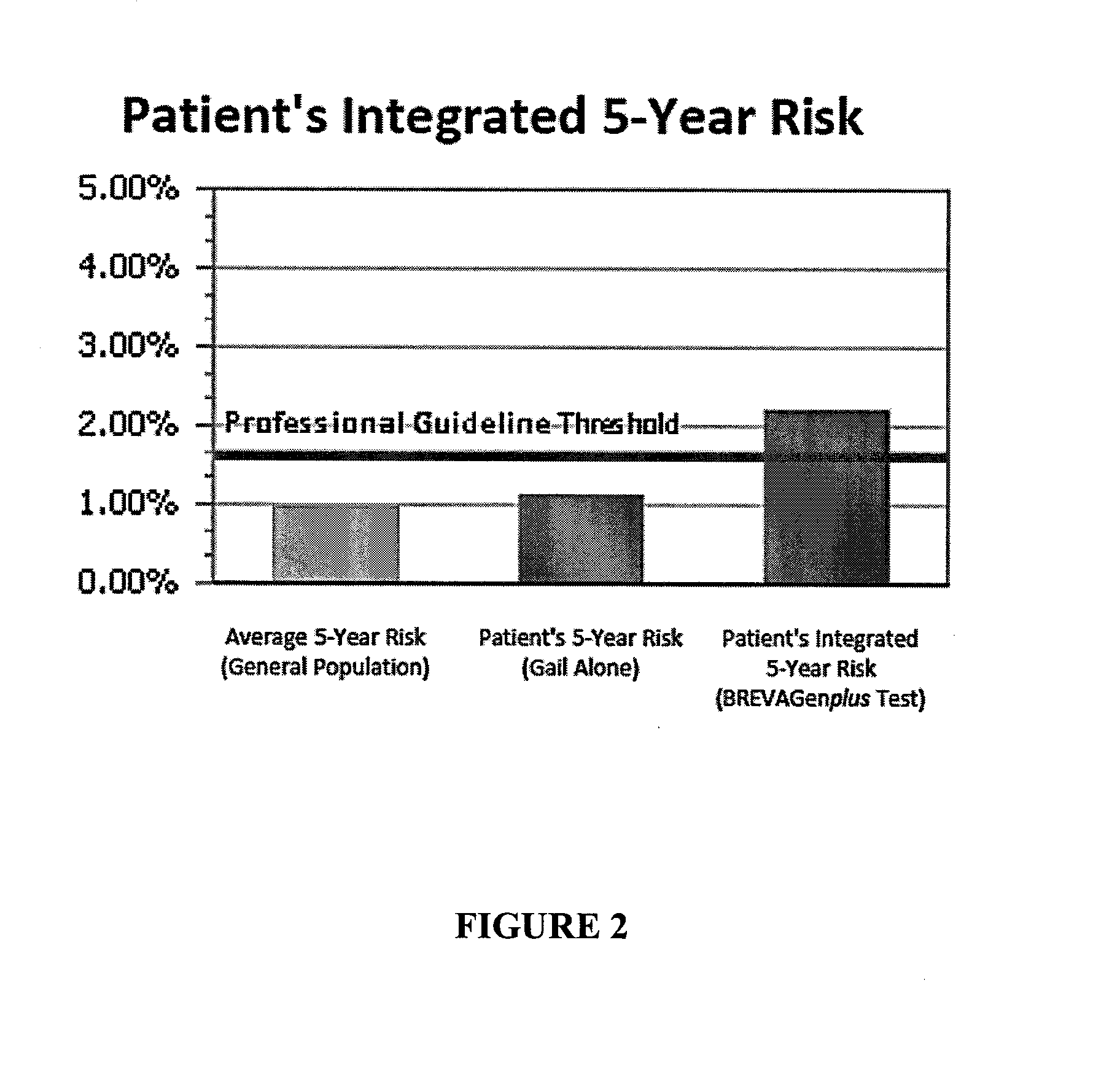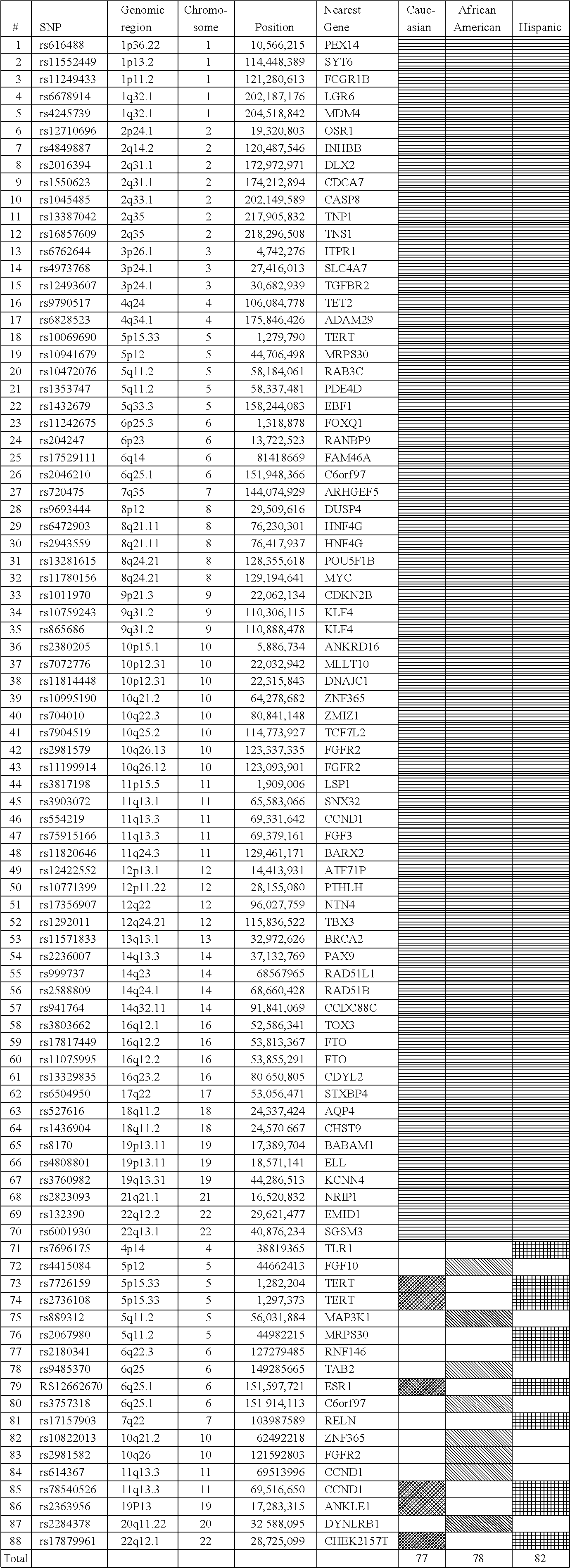Methods for Assessing Risk of Developing Breast Cancer
a breast cancer and risk assessment technology, applied in the field of breast cancer risk assessment, can solve the problems of relatively rare mutations, no further linkage studies of gene linkage studies,
- Summary
- Abstract
- Description
- Claims
- Application Information
AI Technical Summary
Benefits of technology
Problems solved by technology
Method used
Image
Examples
example 1
SNPs Indicative of Breast Cancer Risk
[0228]SNPs indicative of breast cancer risk are shown in Table 6. 88 SNPs have been identified in total. 77 SNPs are informative in Caucasians, 78 SNPs are informative in African Americans and 82 are informative in Hispanics. 70 SNPs are informative in Caucasians, African Americans and Hispanics (indicated by horizontal stripe pattern; see also Table 7). The remaining 18 SNPs (see Table 8) are informative in either Caucasians (indicated by dark trellis pattern; see also Table 9), African Americans (indicated by downward diagonal stripe pattern; see also Table 10) and / or Hispanics (indicated by light grid pattern; see also Table 11).
TABLE 6SNPs indicative of breast cancer risk (n = 88)
TABLE 7SNPs common across Caucasians, African American and Hispanic populations (n = 70)
TABLE 8SNPs not common across Caucasians, African American and Hispanic populations (n = 18)
TABLE 9Caucasian SNPs (n = 77). Alleles represented as major / minor (eg for rs616488 A i...
example 2
Risk Thresholds
[0229]Breast cancer risk assessment is important as it allows the identification of women who are at elevated risk who may benefit from either targeted screening or preventative measures (De la Cruz, 2014; Advani and Morena-Aspitia, 2014). Both genetic and environmental factors are thought to play a role in multifactorial susceptibility to breast cancer (Lichtenstein et al., 2000; Mahoney et al., 2008). In order to optimally assess risk, both components are considered together. Currently, breast cancer risk is often assessed by utilizing the National Cancer Institute's (NCI) Breast Cancer Risk Assessment Tool (BCRAT), often referred to as the “Gail Model” (Gail et al., 1989; Costantino et al., 1999; Rockhill et al., 2001). The BCRAT incorporates several risk factors related to personal history and also incorporates some family history information.
[0230]The current model takes the information provided by the ordering physician to calculate a Gail score, and combines it...
example 3
Combination of SNP Risk Scores with Breast Cancer Risk Models
[0232]There are several popular breast cancer risk prediction models. These include BOADICEA (Antonio et al., 2008 and 2009) and BRCAPRO (Chen et al., 2004; Mazzola et al., 2014; Parmigianin et al., 1998), both of which are based on pedigree data for breast and ovarian cancer; the Gail Model (BCRAT) (Costatino et al., 1999; Gail et al., 1989), which is based on established risk factors for breast cancer and family history represented by the number of first-degree relatives with breast cancer; and the Tyrer-Cuzick Model (IBIS) (Tyrer et al., 2004), which combines information on familial and personal risk factors for breast cancer. At an individual level, all of these risk prediction models must have good discriminatory accuracy to be able to provide information that is clinically useful to help a woman make decisions on screening or prevention that are tailored to her specific circumstances.
[0233]The present inventors teste...
PUM
| Property | Measurement | Unit |
|---|---|---|
| frequency | aaaaa | aaaaa |
| size | aaaaa | aaaaa |
| residual familial risk | aaaaa | aaaaa |
Abstract
Description
Claims
Application Information
 Login to View More
Login to View More - R&D
- Intellectual Property
- Life Sciences
- Materials
- Tech Scout
- Unparalleled Data Quality
- Higher Quality Content
- 60% Fewer Hallucinations
Browse by: Latest US Patents, China's latest patents, Technical Efficacy Thesaurus, Application Domain, Technology Topic, Popular Technical Reports.
© 2025 PatSnap. All rights reserved.Legal|Privacy policy|Modern Slavery Act Transparency Statement|Sitemap|About US| Contact US: help@patsnap.com



